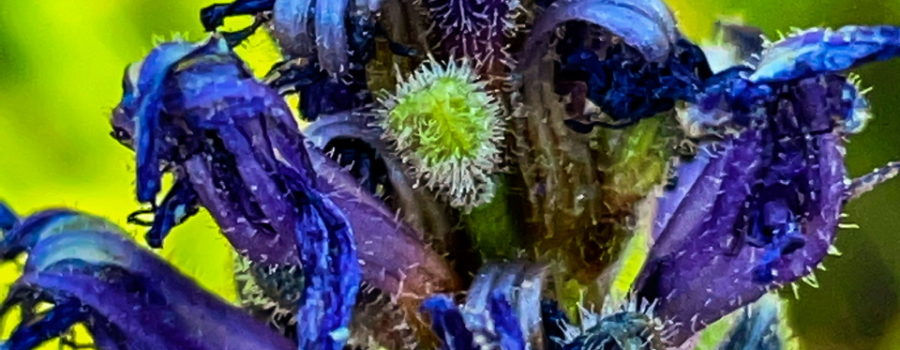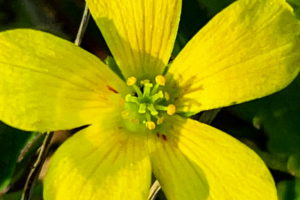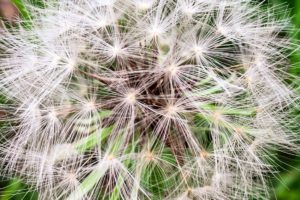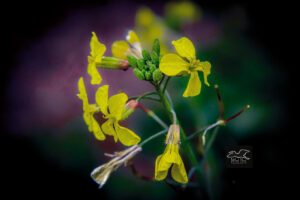Pickerelweed is an Incredibly Attractive and Beneficial Aquatic Plant

Yesterday I wrote about stopping to shoot some photos on the roadside of one of the highways in our area. I had some time to spend before heading out for a house call appointment and what better way to spend it than by taking photos? I had seen these beautiful purplish blue flowers growing in bunches in some of the wetter patches along the road, and I definitely wanted to get a closer look and some photos. After I parked my truck and got my gear together I started to walk to the patch of flowers and almost immediately got sidetracked by the orange milkwort flowers I wrote about yesterday. But after I finished with them, I did make sure I made it to the flowers I had come to see! Up close and not zipping by at 65 mph they were even prettier than I had realized from the truck.

I took as many pictures as I had time for and could get without getting soaked feet. Next time I go out there I definitely need to wear boots! This plant was one I was not at all familiar with (but probably should have been), but the gorgeous purple-blue flowers kind of reminded me of water hyacinth. So once I got home, it was research time. This one wasn’t difficult to identify, and is actually a very common aquatic plant in much of North America, Central America, and into South America. It can also be found in lots of other places around the world as a cultivated ornamental in water gardens. It is pickerelweed, also known as pickerel rush.

Pickerelweed likes to grow along the edges of ponds, lakes, swamps, and bogs. It prefers direct sunlight, but can grow in areas with partial sunlight, or even full shade (but it doesn’t flower well there). It likes water that is between 5-12 inches deep, but can tolerate occasional flooding. It can reproduce via seeds or via rhizomes that spread out from the parent plant. This method of reproduction allows it to grow in clumps and to quickly spread along shorelines if unchecked. Because of this habit, pickerelweed can be invasive, out competing other native plants, but it can also stabilize what are frequently unstable shorelines. The ability to help stabilize the shore, along with providing food and shelter for many species, makes it definitely an overall beneficial native plant.

One of animals that likes to call pickerelweed home in northern climates is the Northern pike, (also known as pickerel), which gives the plant it’s common name. Other species that like pickerelweed include many aquatic invertebrates and several other types of freshwater fish. Dragonflies and damselflies, as well as snails, frogs, and some lizards use pickerelweed to provide shelter for their eggs, and some of the hatchlings will feed on the leaves. The flowers, which bloom from late spring into the fall, attract plenty of pollinators including bumblebees (there is even one species of bumblebee that feeds exclusively on pickerelweed!), butterflies, flies, moths, and bats. The seeds are attractive food for ducks, deer, turkeys, and people. I’m definitely glad that I took the time to learn more about this amazing aquatic plant, and I intend to go back out there and look for some of these other animals that depend on it for so much!






Recent Comments